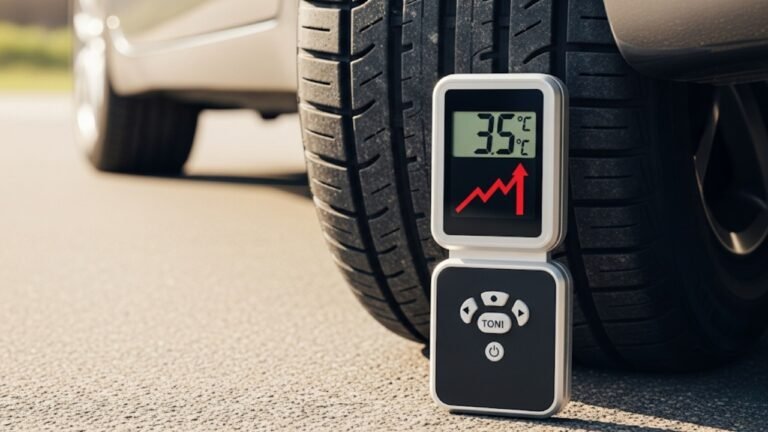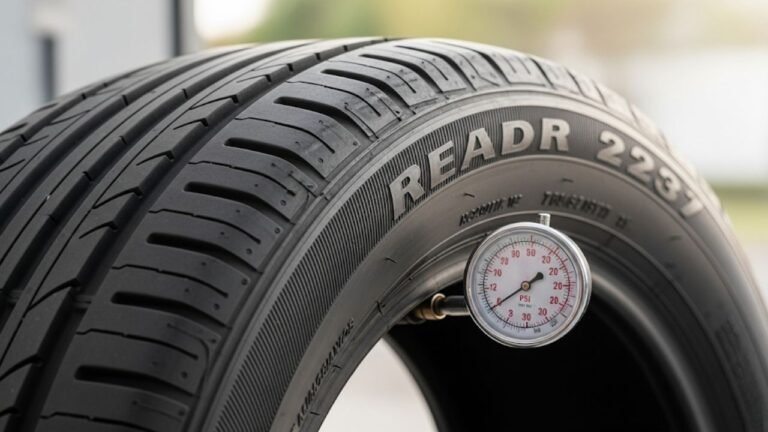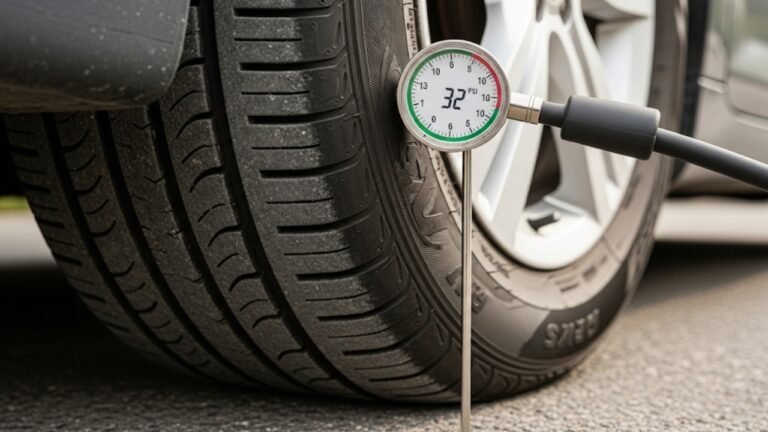How Long Does It Take to Repair a Flat Tire?

Ever had a day where everything was going smoothly… until you heard that dreadful hiss? I sure have. It was a sunny morning, I had my coffee, keys in hand, ready to hit the road. Then boom — a completely flat tire. It’s a scenario millions of people face each year, and it always seems to happen when you’re already running late.
Whether you’re commuting to work, heading on a road trip, or simply going to the store — a flat tire doesn’t care. It strikes when it wants to. But when it happens, one question always pops up first: how long does it take to repair a flat tire?
That’s what we’re diving into today — an honest, detailed, and easy-to-understand breakdown of what actually goes into repairing a flat tire. This isn’t just theory. It’s drawn from real-world experience, mechanic insights, and some shared frustration we’ve all had on the side of the road.
Let’s get rolling.
The Quick Answer: It Depends (But Here’s a Realistic Range)

But the truth? That depends on several things, like:
-
The type of tire damage
-
Where the damage is (sidewall or tread?)
-
Whether you’re doing it yourself or waiting for help
-
If you’re at home, at work, or stuck on a busy highway
-
The kind of tools and expertise available
Here’s a quick table for reference:
| Situation | Estimated Time |
|---|---|
| DIY Plug or Patch (at home) | 20–30 minutes |
| Professional Shop Repair | 30–45 minutes |
| Mobile Mechanic Service | 45–60 minutes |
| Using a Spare Tire (Temporary Fix) | 10–20 minutes |
| Full Tire Replacement | 30–60 minutes |
But don’t worry — we’ll break each of these down. Because if you’ve ever been stuck at the side of the road sweating bullets, you know every minute feels like an hour.
What Kind of Flat Are We Dealing With?
Before asking how long does it take to repair a flat tire, you’ve got to ask: what kind of flat is this, anyway?
There are several common types of tire damage:
-
Puncture from a nail, screw, or glass
-
Slow leak due to valve damage
-
Sidewall damage (bad news!)
-
Bead leaks around the rim
-
Blowouts (even worse news)
The time it takes to repair varies wildly depending on what caused it.
Example:
If you have a small nail puncture in the tread, a tire repair shop can usually fix that in 20–30 minutes. But if the damage is on the sidewall, most mechanics won’t repair it at all. That’ll require a full replacement, and that could take an hour — assuming the tire is in stock.
And if your tire has a slow leak, diagnosing it can take extra time. A shop might submerge the tire in water or use a leak detector to locate the source. This can add 15–20 minutes to your repair time.
DIY vs Professional: Time, Tools, and Confidence
Now here’s where personal experience comes into play. I’ve patched my own tire with a repair kit in the trunk more times than I can count — mostly out of desperation. It’s not hard, but it’s definitely not for everyone.
Here’s what you should consider:
DIY Flat Tire Repair
-
Time: 20–30 minutes if you’re familiar
-
Tools Needed: Tire plug kit, air compressor, jack
-
Skill Level: Intermediate
-
Cost: Usually under $20
Professional Flat Tire Repair
-
Time: 30–45 minutes (plus waiting time)
-
Tools: Heavy-duty patches, high-pressure testing
-
Skill Level: Trained technician
-
Cost: Around $15–$30
If you’re stuck in the rain on a narrow roadside? Call for help. But if you’re in your garage or driveway with time and tools, a DIY patch is totally doable.
Let me tell you about the time I tried fixing a flat in the middle of nowhere with only a plug kit, a flashlight, and zero cell service. It took me 40 minutes, 2 broken fingernails, and a lot of swearing — but I got it done. And that tire? It lasted another six months!
Temporary Solutions: The Spare Tire Shuffle
Ah, the old reliable — the spare tire. We often forget it’s even there until we need it. If you’re wondering how long does it take to repair a flat tire, but you’re in a rush, swapping it for a spare is a common option.
How long does it take?
10 to 20 minutes, if you’ve got the jack and know-how.
But keep this in mind:
-
Donut spares aren’t built for distance or speed
-
Limit your driving to 50–70 miles max
-
Top speed should stay under 50 mph
Changing to a spare buys you time — but it’s not the final fix. You’ll still need to repair or replace the damaged tire soon after.
Pro Tip: Always check your spare’s air pressure. You don’t want two flat tires in one day. Trust me on that one.
Waiting for Roadside Assistance: The Longest Wait of All
Sometimes, it’s just out of your hands. Maybe you’re on a dark highway. Maybe it’s raining, or your jack is missing. In those moments, roadside assistance becomes your lifeline.
But how long does it take to repair a flat tire when you’re waiting for a service truck?
It can take anywhere from 45 minutes to 2 hours, depending on:
-
Your location
-
Time of day (rush hour = longer wait)
-
Weather conditions
-
Availability of technicians
Once the mechanic arrives, the actual repair or replacement takes about 15–30 minutes, but the waiting is the real time-eater.
And yes — it can feel like forever. Especially when you’re sitting in a steaming hot car or freezing in the cold.
The Emotional Side of Flat Tire Repairs
Let’s be real. A flat tire doesn’t just mess with your schedule — it messes with your mood.
We’ve all been there — standing beside the car, hands on hips, maybe even muttering a few choice words. There’s a weird mix of helplessness, urgency, and panic. Even the most calm-headed folks get a little rattled.
You might be late for work… or miss a doctor’s appointment… or keep your kids waiting in school pickup.
That’s why knowing how long does it take to repair a flat tire actually matters so much. It’s not just about minutes on a clock. It’s about restoring control.
Why Flat Tire Repairs Sometimes Take Longer Than Expected
In a perfect world, you’d roll into a shop, they’d fix your tire in 30 minutes, and you’d be on your way. But let’s face it — the real world isn’t that generous. Sometimes, things take longer. Way longer.
So, what slows things down?
1. Busy Tire Shops
If you pull into a repair shop on a Saturday afternoon, brace yourself. Weekends are rush hour for auto repairs. It might take an extra hour just to get seen. Some garages run on a “first come, first served” basis. Others might prioritize bigger jobs or appointments.
Tip: Try visiting early in the morning on weekdays. Less crowd = faster service.
2. Damaged Rim or Wheel
Sometimes the tire isn’t the only problem. If you hit a pothole hard enough, your rim might be bent. That’s a different repair altogether and adds both time and cost. Shops may need to unmount the tire, check for leaks, and then repair or replace the rim.
That adds 30–90 minutes to the timeline.
3. Tire Brand or Size Availability
If your tire needs replacing and your vehicle uses an uncommon size or brand, you could be in for a wait. Some shops might need to order your tire, and that’s where time balloons from an hour to a day (or two).
Tire Repair vs Tire Replacement: What’s Faster?
You might be thinking, “Why not just replace it and be done?”
Good question. Here’s how the two options compare:
| Process | Average Time | Cost Estimate | Best For |
|---|---|---|---|
| Plug or Patch Repair | 20–30 minutes | $15–$30 | Small tread punctures |
| Full Tire Replacement | 30–60 minutes | $80–$300 (per tire) | Sidewall damage, bald tires, major blowouts |
Repair is usually faster and cheaper, but it only works for certain types of damage. If the hole is too close to the sidewall or larger than 1/4 inch, replacement is the only option.
How Professionals Prioritize Flat Tires
Ever wondered how your flat repair fits into a shop’s busy schedule?
Auto repair shops usually triage their jobs. That means:
-
Quick fixes (like tire plugs) often get fast-tracked
-
Scheduled appointments get top priority
-
Walk-ins wait based on queue length
-
Emergency repairs (like tow-ins) may skip the line
Some shops have dedicated tire lanes, which help — but not all. If you call ahead and explain your situation, some managers will squeeze you in.
Personal Story: One rainy Tuesday, I had a tire that kept losing air. I walked into a local shop with zero hope and a packed lobby. I explained I had to pick up my daughter from daycare in 40 minutes — and guess what? They fixed it in 15. People do understand when you’re honest.
What If You’re on a Road Trip?
A flat tire during a road trip is a mood killer. But it’s more than that — it can derail your whole itinerary. So how long does it take to repair a flat tire when you’re in the middle of nowhere?
It depends on:
-
Distance to nearest repair shop
-
Availability of roadside help or towing
-
Type of tire damage
-
Spare tire condition
If you’re lucky and have signal, a mobile mechanic might reach you in 45–90 minutes. If not, you might need towing — and that can stretch your day by several hours.
Always check your spare tire, jack, and tire pressure kit before a long drive. Prevention is everything when you’re far from home.
How to Speed Things Up: Realistic Tips
Sometimes, it’s not about if you’ll get a flat — but when. So here’s how to be ready and avoid wasting hours.
✅ Be Prepared
Keep these in your trunk:
-
Tire plug kit
-
Portable air compressor
-
Tire pressure gauge
-
Flashlight
-
Spare tire (checked monthly)
✅ Know the Signs
Don’t wait for the tire to go completely flat. Look out for:
-
Sudden pulling to one side
-
Hissing sounds
-
Dashboard warning lights
-
Wobbling or vibration while driving
Early detection = faster fixes.
✅ Build Relationships with Local Shops
Knowing a local mechanic can save hours. They’ll often fit you in faster than big-box garages if you’re a regular.
FAQs About How Long It Takes to Repair a Flat Tire
1. Can I drive with a flat tire to a repair shop?
No, and please don’t try. Driving even a short distance on a flat tire can ruin the rim and lead to hundreds in repair costs. Use a spare or call for a tow.
2. Is a plug or patch better?
A patch is more reliable, especially for larger punctures. Plugs are quick and easy for small holes, but not always long-term solutions.
3. How long does a patched tire last?
If done professionally, a patch can last for the life of the tire. Just make sure it’s not near the sidewall or on a seam.
4. Will my tire pressure warning go away after repair?
Yes, but it might take a few minutes of driving. If it doesn’t, you may need to manually reset the TPMS system or check sensor function.
5. Can I repair a run-flat tire?
Some can be patched, but many must be replaced. Run-flat tires often have internal structure damage that’s hard to detect.
6. What if the flat happened at night?
Call roadside assistance. Many services operate 24/7. Keep reflective gear and a safety triangle in your car if you’re stuck on a dark road.
7. Do tire warranties cover flat repairs?
Some do — especially road hazard warranties. Always ask when you buy new tires.
8. How do I know if the repair was done right?
A good shop will check the tire pressure, test for leaks, and let you watch the process. Your tire should hold air and ride smooth afterward.
Final Thoughts: Flat Tires Don’t Have to Flatten Your Day
Look, a flat tire isn’t fun. No one wakes up thinking, “Today’s the day I want to sit in a waiting room or jack up my car on the roadside.” But it happens. And when it does, knowing how long does it take to repair a flat tire can take the edge off.
In most cases, you’ll be back on the road in under an hour. With the right mindset, tools, or a good mechanic, it’s just a temporary pause — not a permanent setback.
So next time your car gives that soft hiss of betrayal, take a deep breath. You’ve got this. You’re prepared. And now, you know what to expect.






